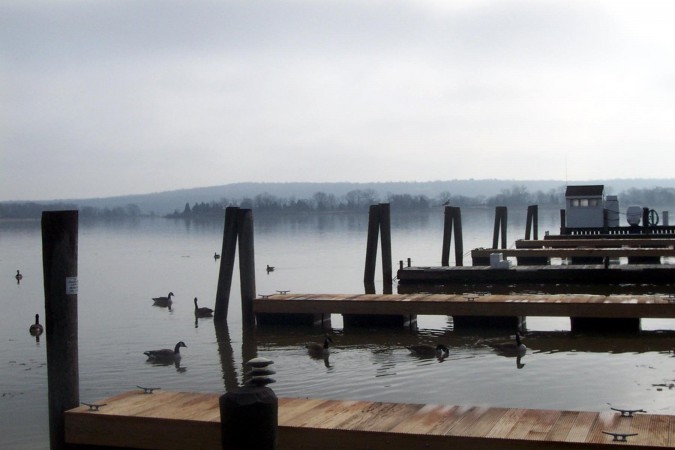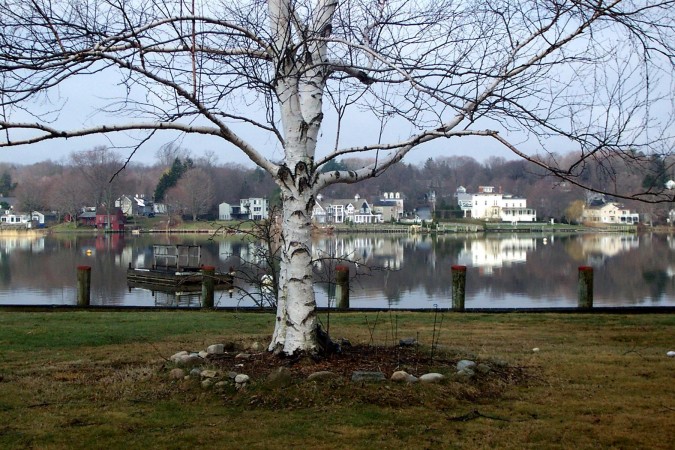Connecticut
Connecticut River Tidelands: A Last Great Place
Fifteen years ago, The Nature Conservancy included a surprising entry on its list of the Western Hemisphere’s 40 “Last Great Places”: the Connecticut River tidelands. Surprising, because the salt marshes and tidal flats at the mouth of New England’s longest river spread through a portion of the busy I-95 corridor of one of the most […]

Coffee By Design | Portland, Maine
Photo Credit : Katherine Keenan Fifteen years ago, The Nature Conservancy included a surprising entry on its list of the Western Hemisphere’s 40 “Last Great Places”: the Connecticut River tidelands. Surprising, because the salt marshes and tidal flats at the mouth of New England’s longest river spread through a portion of the busy I-95 corridor of one of the most densely populated states in the country. Surprising, because most people living outside the area don’t even know that the tidelands exist.
But the Conservancy knew what it was doing. Among the thousands of great places remaining on the planet, the campaign sought to draw attention to a special few facing immediate, potentially irreversible, threat. The organization has a particular interest in rare and endangered species. And in the Connecticut estuary and its handful of tributaries, the Conservancy identified one of the richest and most diverse ecosystems in the northeastern United States — an extraordinarily intact and fragile wetland complex that provides habitat to seven globally rare and 43 state-listed species.
One of the most immediate threats was the invasion of Phragmites australis— dense stands of 15-foot-high reed grass that were effectively choking off much of what the Conservancy hoped to protect. As program director Nathan Frohling described it to a New York Times reporter, “Phrag is a monoculture that squeezes out all other species. But it isn’t just the species that are endangered; it’s the habitat itself, this brackish tidal marsh, that is rare.”
Phrag, although an invasive species in this particular habitat, is actually native to the Connecticut River Valley — peat core samples show evidence going back some 5,000 years. But for nearly all of that history, the reeds co-existed with other plants along upland shores, far from the salt marshes. But something happened in the 19th and early 20th centuries — likely the result of human activity that changed the balance of nutrients in the tidelands. Phrag came into the marshes and, once established, began to take over.
Thanks in part to the weight and emotional appeal of the “Last Great Places” campaign, the Conservancy and the state’s Department of Environmental Protection secured funding in 2000 to try to bring the phrag into some kind of balance. Using targeted herbicides, cutting, and mulching, in addition to plugging and filling the old drainage ditches, the DEP project focused on restoring the degraded marshland at Great Island’s Roger Tory Peterson Wildlife Area, while the Conservancy worked on the Lord Cove and Lieutenant River tidal marshes in the Old Lyme coastal area.
Since completion of the major part of this work, the natural flow of saltwater has returned to the marshlands, shallow ponds have developed, and hundreds of acres of phrag have been eliminated or controlled. Native brackish grasses and plants have slowly re-emerged, and with them, seaside sparrows, marsh wrens, green-winged teals, egrets, and several types of rails. The two phrag programs have been so successful that funding for similar-scale projects is targeting other locations in the tidelands.
Fifteen years ago, The Nature Conservancy included a surprising entry on its list of the Western Hemisphere’s 40 “Last Great Places”: the Connecticut River tidelands. Surprising, because the salt marshes and tidal flats at the mouth of New England’s longest river spread through a portion of the busy I-95 corridor of one of the most densely populated states in the country. Surprising, because most people living outside the area don’t even know that the tidelands exist.
But the Conservancy knew what it was doing. Among the thousands of great places remaining on the planet, the campaign sought to draw attention to a special few facing immediate, potentially irreversible, threat. The organization has a particular interest in rare and endangered species. And in the Connecticut estuary and its handful of tributaries, the Conservancy identified one of the richest and most diverse ecosystems in the northeastern United States — an extraordinarily intact and fragile wetland complex that provides habitat to seven globally rare and 43 state-listed species.
One of the most immediate threats was the invasion of Phragmites australis— dense stands of 15-foot-high reed grass that were effectively choking off much of what the Conservancy hoped to protect. As program director Nathan Frohling described it to a New York Times reporter, “Phrag is a monoculture that squeezes out all other species. But it isn’t just the species that are endangered; it’s the habitat itself, this brackish tidal marsh, that is rare.”
Phrag, although an invasive species in this particular habitat, is actually native to the Connecticut River Valley — peat core samples show evidence going back some 5,000 years. But for nearly all of that history, the reeds co-existed with other plants along upland shores, far from the salt marshes. But something happened in the 19th and early 20th centuries — likely the result of human activity that changed the balance of nutrients in the tidelands. Phrag came into the marshes and, once established, began to take over.
Thanks in part to the weight and emotional appeal of the “Last Great Places” campaign, the Conservancy and the state’s Department of Environmental Protection secured funding in 2000 to try to bring the phrag into some kind of balance. Using targeted herbicides, cutting, and mulching, in addition to plugging and filling the old drainage ditches, the DEP project focused on restoring the degraded marshland at Great Island’s Roger Tory Peterson Wildlife Area, while the Conservancy worked on the Lord Cove and Lieutenant River tidal marshes in the Old Lyme coastal area.
Since completion of the major part of this work, the natural flow of saltwater has returned to the marshlands, shallow ponds have developed, and hundreds of acres of phrag have been eliminated or controlled. Native brackish grasses and plants have slowly re-emerged, and with them, seaside sparrows, marsh wrens, green-winged teals, egrets, and several types of rails. The two phrag programs have been so successful that funding for similar-scale projects is targeting other locations in the tidelands.
 Meanwhile, the Conservancy’s work has energized a network of local, regional, state, and federal groups collaborating on the stewardship of the lower Connecticut River. For example, eight mouth-of-the-river communities represented on the Gateway Commission work to preserve the scenic qualities of the tidelands via zoning and citizen outreach. The Conservancy, increasingly aware of “nonpoint” sources of pollution and downstream impact, has also extended its focus beyond the salt marshes. At press time, legislation was pending in the U.S. Senate to designate the Eightmile River, an important Connecticut tributary, and its 62-square-mile watershed as a federally recognized “Wild and Scenic River” — only the second time such designation has recognized a river system rather than a single river.
Still, the fight to save the tidelands is pitched against a relentless foe. Pressure from sprawl and development continues to eat away at the edges. “We’re seeing a lot more assault on the ridgetops,” notes Judy Preston of the nonprofit Tidewater Institute. High levels of nitrogen still contaminate the seemingly clean water, and mercury laces the silt. The oyster and shad fisheries remain decimated. The attacks come from everywhere — from the fertilizer running off manicured lawns to airborne particles sent out from power plants hundreds of miles away.
Great publicity and a strong coalition of stewards may still not be enough to preserve a balance in the face of the planet’s most powerful invasive species: human beings.
Meanwhile, the Conservancy’s work has energized a network of local, regional, state, and federal groups collaborating on the stewardship of the lower Connecticut River. For example, eight mouth-of-the-river communities represented on the Gateway Commission work to preserve the scenic qualities of the tidelands via zoning and citizen outreach. The Conservancy, increasingly aware of “nonpoint” sources of pollution and downstream impact, has also extended its focus beyond the salt marshes. At press time, legislation was pending in the U.S. Senate to designate the Eightmile River, an important Connecticut tributary, and its 62-square-mile watershed as a federally recognized “Wild and Scenic River” — only the second time such designation has recognized a river system rather than a single river.
Still, the fight to save the tidelands is pitched against a relentless foe. Pressure from sprawl and development continues to eat away at the edges. “We’re seeing a lot more assault on the ridgetops,” notes Judy Preston of the nonprofit Tidewater Institute. High levels of nitrogen still contaminate the seemingly clean water, and mercury laces the silt. The oyster and shad fisheries remain decimated. The attacks come from everywhere — from the fertilizer running off manicured lawns to airborne particles sent out from power plants hundreds of miles away.
Great publicity and a strong coalition of stewards may still not be enough to preserve a balance in the face of the planet’s most powerful invasive species: human beings.







